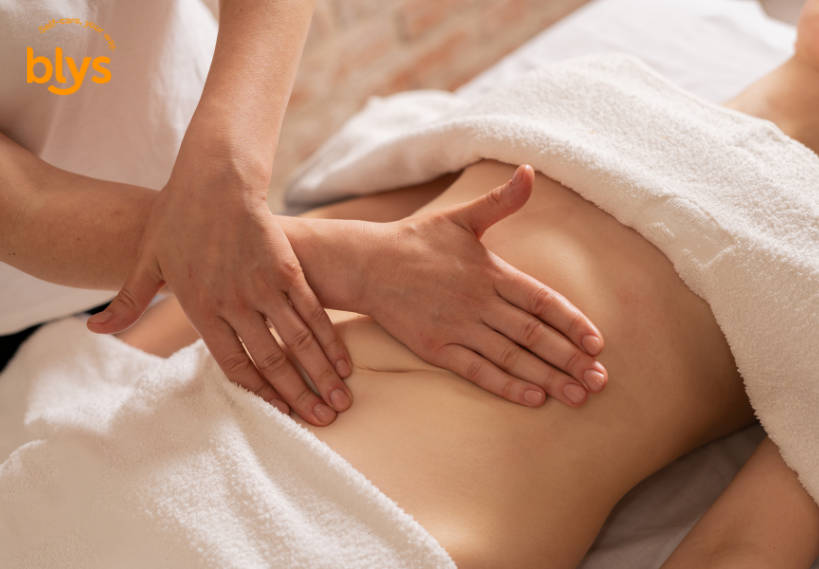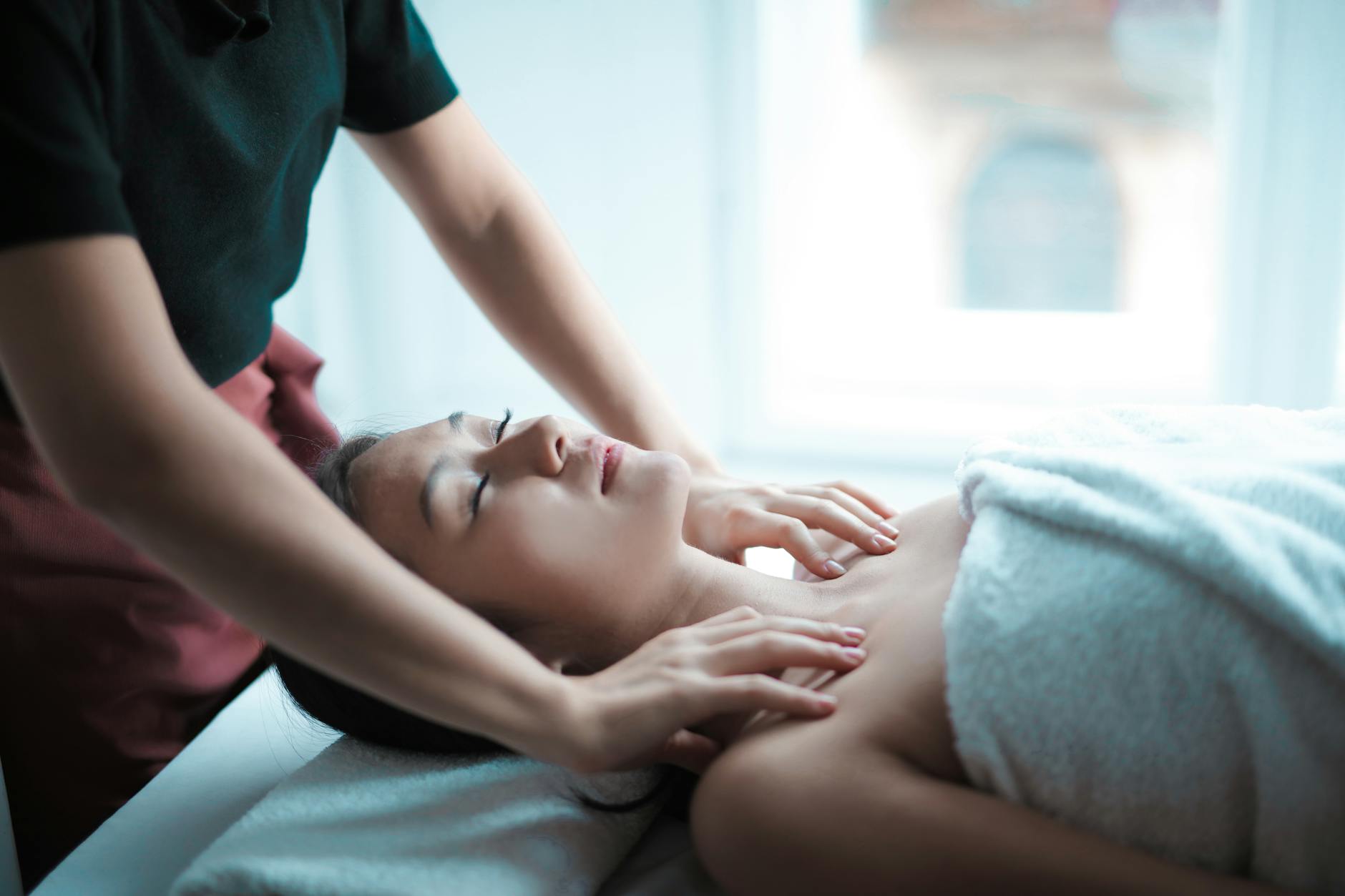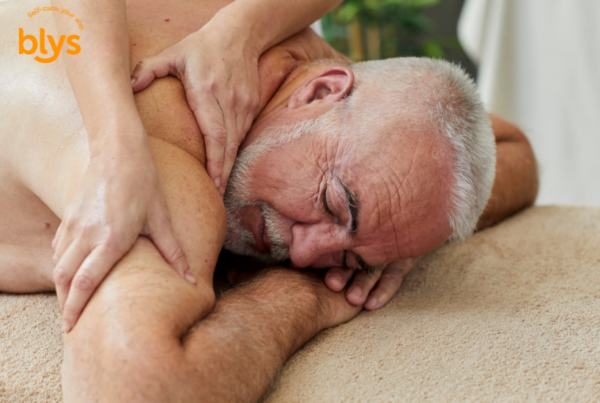
When you think of detox, you might picture green juices, herbal teas or intense workouts. But there’s another powerful and often overlooked tool in the natural detox space: lymphatic drainage massage.
This gentle and rhythmic massage focuses on the lymphatic system, which plays a key role in removing waste, excess fluids and toxins from the body. For many Aussies, it has become a go-to practice for boosting immune health, reducing swelling and speeding up recovery after exercise or surgery.
In this blog, we’ll break down how the lymphatic system works, explain the science-backed benefits of lymphatic drainage massage and share practical tips you can try at home. You’ll also learn when it’s best to book a professional massage for optimal results.
Whether you’re hoping to reduce bloating, support your immune system or explore natural detox methods, this guide will help you understand why lymphatic drainage massage might just be your new secret weapon.
What is the lymphatic system, and why does it matter?
The lymphatic system is one of the body’s most underrated but vital systems. It’s a network of lymph vessels, nodes and organs that helps remove waste, excess fluid and toxins. Think of it as the body’s natural waste disposal and immune support system, working quietly to keep you healthy every day.
At its core, the lymphatic system:
- Moves lymph fluid, which carries infection-fighting white blood cells
- Filters out waste and harmful substances through lymph nodes
- Helps regulate fluid balance in the body
- Supports the immune system by clearing bacteria and viruses
When the lymphatic system is running smoothly, you’re more likely to feel energised, less swollen and better protected against illness. But when it’s sluggish or blocked, you may notice:
- Puffiness or bloating
- Tiredness or low energy
- Slower recovery from colds, injuries or workouts
For Aussies exploring natural detox methods, maintaining lymphatic health is essential. This is where lymphatic drainage massage comes in, a gentle yet powerful therapy that helps stimulate lymph flow, reduce swelling and support overall wellbeing.
What is lymphatic drainage massage?
Lymphatic drainage massage is a gentle, rhythmic massage technique designed to stimulate the flow of lymph fluid throughout the body. It was first developed in the 1930s by Emil and Estrid Vodder, who discovered that specific hand movements could help clear blockages in the lymphatic system and improve overall health.
Unlike deep tissue or sports massage, lymphatic drainage uses very light pressure and precise, wave-like movements. The goal is not to work the muscles but to encourage the lymph fluid to move towards the lymph nodes, where waste and toxins are filtered out.
Some of the core areas typically targeted during a lymphatic massage include:
- Neck and collarbone area: key drainage points.
- Armpits: home to large clusters of lymph nodes.
- Abdomen: helps move fluid through the digestive system.
- Back of knees and groin: important for lower body lymph flow.
Research shows that lymphatic drainage massage can improve lymph flow, reduce swelling, and support immune function. It highlights how this technique can benefit people dealing with lymphoedema, post-surgery recovery, or even general swelling and puffiness.
For anyone looking to feel lighter, reduce bloating or recover faster after intense exercise or surgery, lymphatic drainage massage offers a natural, low-risk option.
Science-backed lymphatic drainage massage benefits
Lymphatic drainage massage has been widely studied for its ability to support health and wellbeing. Research shows that it’s not just a feel-good treatment — it has measurable effects on the body, especially when it comes to swelling, recovery, and immune support (source).
Here’s a closer look at the science-backed benefits.
Boosts immune health
The lymphatic system plays a critical role in immunity by moving lymph fluid, which carries white blood cells, throughout the body. When lymph flow improves, immune cells circulate more effectively, helping your body detect and fight off infections faster.
Studies have shown that manual lymphatic drainage (MLD) can improve lymph circulation and support immune functions by helping to clear waste products, bacteria, and viruses from tissues. This makes it especially helpful during cold and flu season or when you’re feeling run-down.
Reduces swelling and water retention
Lymphatic drainage massage is well-known for reducing oedema, the build-up of excess fluid in tissues. Research highlights its benefits for people with lymphoedema, post-surgery swelling, or even hormonal bloating.
For example, MLD has been shown to significantly reduce limb swelling, improve joint mobility, and ease discomfort. Many Aussies also book it after long flights or during hot weather to help reduce puffiness in the legs, ankles, and face.
Speeds up recovery after exercise or surgery
Whether you’re a weekend runner or recovering from surgery, lymphatic massage can help. By promoting lymph flow, the body clears out metabolic waste like lactic acid more efficiently, reducing delayed-onset muscle soreness (DOMS) and inflammation.
Athletes often use MLD as part of their recovery plan to get back to training sooner, while post-surgical patients turn to it for reducing swelling and speeding up tissue repair, always under their doctor’s guidance.
Improves skin health and appearance
Beyond its health benefits, lymphatic drainage massage can also help improve your skin. By encouraging fluid movement, it reduces puffiness, enhances skin tone, and boosts circulation, leaving the skin looking brighter and more refreshed.
Some studies even suggest that MLD can improve skin elasticity and hydration, which is especially useful after cosmetic treatments or if you want to refresh tired-looking skin.
Want to feel the difference yourself? Book a professional lymphatic drainage massage with Blys and enjoy expert care right at home.
How lymphatic massage complements natural detox methods
When it comes to detoxing, many Aussies turn to green smoothies, herbal teas or juice cleanses. But your body already has its own built-in detox system, and the lymphatic system is at the heart of it.
Unlike extreme diets or quick fixes, lymphatic drainage massage works in harmony with the body’s natural processes. It moves waste, toxins and excess fluid toward the lymph nodes, where they’re filtered and cleared.
Here’s how it compares with other natural detox methods:
| Detox Method | How It Helps the Body |
| Hydration | Drinking plenty of water keeps lymph fluid moving smoothly |
| Exercise | Activities like walking, yoga or swimming help stimulate lymph flow |
| Dry brushing | Gently brushing the skin promotes surface lymph movement |
| Healthy diet | Eating fibre-rich foods supports gut health and waste removal |
| Lymphatic massage | Directly stimulates the lymphatic system to help clear waste and reduce swelling |
Lymphatic massage complements these everyday practices by offering direct stimulation to the lymphatic system—something hydration or diet alone can’t achieve. It’s gentle, non-invasive and backed by research, making it a smart and sustainable addition to your wellness routine.
It’s worth noting that lymphatic massage isn’t a magic bullet or a quick weight-loss solution. Instead, think of it as a supportive tool that helps your body do what it’s naturally designed to do: detox, heal and maintain balance.
How to do lymphatic massage at home
While professional lymphatic drainage massage offers expert care, you can also try simple techniques at home to support your lymphatic health. Just remember that at-home methods should be gentle—this isn’t about deep pressure but light, rhythmic movements to encourage fluid flow.
Here’s a simple step-by-step guide:
- Prepare your space and body: Find a quiet, comfortable space. Take a few deep breaths and relax your shoulders. You may want to apply a small amount of body oil or lotion to reduce friction.
- Start at the neck and collarbone: Use light, sweeping strokes from behind your ears down toward your collarbone. This helps clear the main drainage points and prepares the body for the rest of the massage.
- Move to the armpits: Place your hand flat in the armpit and apply gentle, pumping movements. This helps stimulate one of the body’s largest lymph node clusters.
- Massage the abdomen: Using circular, clockwise motions around your belly button, lightly massage the abdomen to promote fluid movement through the digestive area.
- Focus on the legs: Starting from the ankles, use upward strokes toward the back of the knees and groin. Avoid heavy pressure—think of it like stretching the skin rather than pressing deep.
- Finish with deep breaths and hydration: Take a few slow, deep breaths after your massage. Drink a glass of water to help your body process and flush out waste.
Doing this helps your body make the most of the massage, allowing the lymphatic system to carry out its detox functions effectively.
Common mistakes to avoid
- Pressing too hard
- Rushing the movements
- Skipping key areas like the neck or armpits
- Massaging on broken or irritated skin
- Performing massage when feeling unwell or with a fever
If you’re unsure or want to ensure you’re doing it right, getting help from a trained therapist can make all the difference.
For the ultimate experience, book an in-home lymphatic massage with Blys and enjoy expert care from the comfort of your home.
Who should and shouldn’t get lymphatic drainage massage
Lymphatic drainage massage can offer amazing benefits, but it’s not for everyone. Knowing who can safely enjoy this treatment and who should check with a doctor first is key to getting the most out of it.
Who can benefit from lymphatic drainage massage
- People with mild swelling or water retention: If you experience bloating, puffiness or mild swelling (such as after a long flight), lymphatic massage can help encourage fluid movement and reduce discomfort.
- Post-surgery recovery (with medical approval): Many people recovering from surgery, including cosmetic procedures, turn to lymphatic drainage massage to reduce swelling and speed up healing. Always get your doctor’s approval first.
- Athletes and active individuals: Athletes often use lymphatic massage to help clear waste products from muscles, reduce soreness and improve recovery time.
- Those interested in natural detox methods: Anyone looking to support their immune system and natural detox processes can benefit from occasional sessions.
Want to dive deeper into the benefits? Check out our blog on the benefits of lymphatic drainage massage for even more insights.
Who should avoid lymphatic drainage massage
- People with heart conditions: If you have congestive heart failure or other serious heart conditions, massage that shifts fluid around the body can put strain on your heart.
- Those with kidney problems: Since the kidneys help process and eliminate fluid, people with kidney disease should avoid lymphatic massage without medical supervision.
- People with active infections or fever: Massage can potentially spread infection throughout the body, so it’s best to wait until you’ve fully recovered.
- Individuals with blood clots or cancer (without clearance): Lymphatic massage is not recommended if you have a blood clot, active cancer or are undergoing certain treatments, unless cleared by your healthcare provider.
If you’re ever unsure, check with your GP or specialist before booking a session. Safety always comes first.
Final tips for supporting lymph health
Lymphatic drainage massage is a fantastic tool, but you can also support your lymphatic system with a few simple lifestyle habits. Here are some tips to keep things flowing smoothly:
- Stay active: Regular movement like walking, swimming or yoga helps stimulate lymph flow naturally. Even gentle stretching or bouncing on a mini trampoline can make a difference.
- Stay hydrated: Drinking enough water throughout the day helps maintain the fluid balance your lymphatic system relies on.
- Eat a balanced diet: Include plenty of fruits, vegetables and lean proteins. Foods rich in antioxidants, like berries and leafy greens, help reduce inflammation and support overall health.
- Limit alcohol and processed foods: Excess alcohol and high-sodium foods can slow down lymphatic flow and contribute to fluid retention.
- Try dry brushing or contrast showers: Dry brushing with a soft brush or alternating between warm and cool water in the shower can give your lymphatic system an extra boost.
By combining these simple habits with regular massage, you can help your body stay energised, balanced and resilient.
Conclusion
Lymphatic drainage massage isn’t just a wellness trend, it’s a science-backed, natural way to support your immune system, reduce swelling and help your body clear out waste more efficiently. Whether you’re recovering after exercise, managing mild bloating or simply wanting to give your body a helping hand, lymphatic massage can be a gentle but powerful ally.Ready to experience the benefits yourself? Book your in-home lymphatic drainage massage with Blys and enjoy expert care, right at your doorstep.





